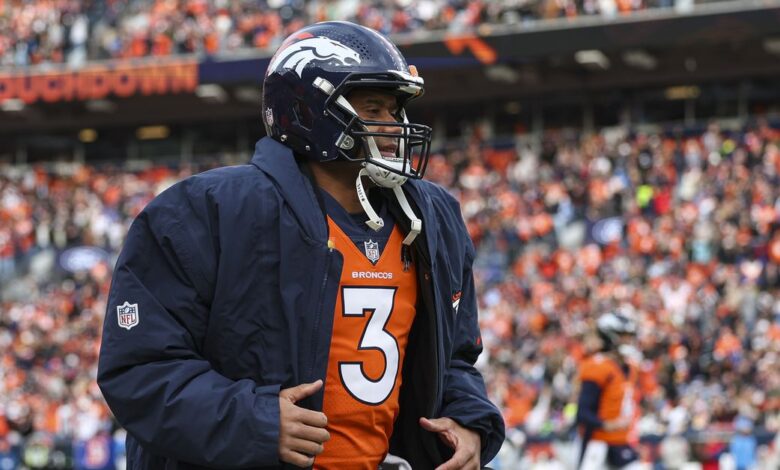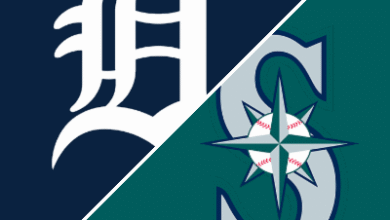The NFL’s post-June 1 designation, explained

June 1 is coming up on the NFL calendar, and while it feels like we are in the downtime of the offseason, a significant amount of salary cap is about to become available to one-third of NFL teams.
On June 2, the NFL’s salary cap rules shift slightly, allowing teams to move on from veterans without incurring significant salary cap impacts in the current league year. The NFL also has a function in place called the “post-June 1 designation that allows teams to release a player before June 1 and still get that cap benefit.
Let’s go in timeline order:
When does the NFL league year start?
The NFL’s league year starts annually in March and teams need to be under the NFL’s hard salary cap. There is no going over. Teams have from the end of the previous season to the start of the new league year to get compliant with the salary cap for the coming year, so in late February and early March you’ll see moves that lower cap allocations including releasing players, trading players, and signing new contracts that push some cap hits into future years.
What are “dead cap” and “dead money” in the NFL?
When an NFL player signs a new contract, many of them receive a signing bonus. To offset this potentially massive one-time cost, the NFL allows teams to prorate, or evenly distribute, the signing bonus over as many as five seasons. It will still be accounted, but not in the season in which it’s paid. The remaining cap hit in future seasons is known as “dead cap” or “dead money” because it’s future cap space that’s already been used. When a player leaves the team via trade, retirement, or release, the total remaining money that’s been paid but not accounted for accelerates into the current season’s cap allocations. The bill comes due, always. For example, if there are three more years with $2 million of dead cap space in each season, the second and third seasons’ $2 million remaining automatically accelerates, making the dead cap owed in the current season $6 million (three seasons times $2 million).
Why is June 1 important in NFL salary cap terms?
In the NFL’s accounting rules, any move involving dead cap that happens after June 1 is split into two seasons; the current upcoming season keeps that year’s dead cap number and the following season absorbs all of the future seasons’ dead cap. In the previous example, you have three seasons of $2 million each, but if you release him on June 2nd, the original $2 million million goes to the first season and the subsequent $4 million goes to the following season in order to not cripple your team’s cap position late in the process.
What is the post-June 1 designation in the NFL?
Instead of actually waiting until June 2 to make the release official, the NFL allows you to designate the move ahead of time. In March at the start of the league year, you can release that player, then carry their existing cap hit until June 2. On June 2, the financials of the move then swing in, and the current dead cap figure replaces that year’s cap hit while future dead cap remaining is assigned to the following season. As in our previous example, $2 million would stay on the current year and $4 million would shift into the following year.
Why does the NFL have the post-June 1 designation?
Being able to release a player in March instead of June is better for the players and teams, so it’s a win-win situation.
It’s better for players because they can hit the market in March when teams have cash, are building their rosters, and planning for the upcoming season. If players had to wait until June, a lot of the money and roster spots have already been allocated. Imagine them sitting on the roster for more than two months knowing they are going to eventually hit the market when there are fewer dollars and fewer roster opportunities.
It’s better for teams because it allows them to move a player off the roster before a roster bonus or option bonus can kick in and need to be paid. It also lets them off the hook earlier so they aren’t liable if a player is injured during off-site offseason training.
If teams can’t use the cap space, how do NFL teams use post-June 1 designation cap space?
While many top NFL free agents sign early in the process, there are still players that are available to help teams. Some of them don’t want to go through the offseason programs, some want to skip the early portions of training camp, some of them are waiting for a camp injury to step in to a prominent role with a franchise on the rise, and some of them are waiting for June 2 for teams to have more cap space. Teams also need contingency plans, so if a team knows they will spend up to the cap in March, April, and May, they can open up cap space in June to sign injury replacements or some prove-it deals late in the offseason through the season.
How many times can you use the post-June 1 designation?
Each team is allowed two of these designations per year. In 2024, the New Orleans Saints and their salary cap doom spiral are the only team to use both.
Can teams use the same post-June 1 designation for trades?
There is no post-June 1 designation for trades. If you want the cap benefits, you need to wait all the way until June 2 and beyond. When the Green Bay Packers traded Aaron Rodgers, they completed the move in April 2023 and his entire $40.3 million dead cap hit was accounted for in 2023.



